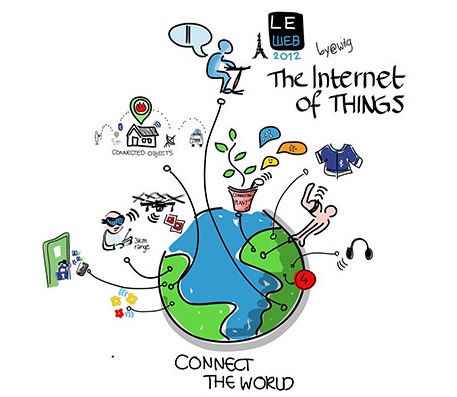Fostering Investment and Innovation in Smart Cities and the Internet of Things (IoT)
This blog was cross posted on Commerce.gov.
 The Internet of Things (IoT) – which involves connecting physical objects to the Internet – has the potential to transform our lives and society. Cities around the world are harnessing the power of these new digital tools to build “Smart Cities.” Local governments are deploying low-cost sensors to improve access to public services and collect data to better understand the needs of the populations they serve. At the same time, manufacturers are using sensors to optimize equipment maintenance and protect the safety of workers, and consumers are upgrading their homes with smart appliances, such as connected thermostats and refrigerators that tweet.
The Internet of Things (IoT) – which involves connecting physical objects to the Internet – has the potential to transform our lives and society. Cities around the world are harnessing the power of these new digital tools to build “Smart Cities.” Local governments are deploying low-cost sensors to improve access to public services and collect data to better understand the needs of the populations they serve. At the same time, manufacturers are using sensors to optimize equipment maintenance and protect the safety of workers, and consumers are upgrading their homes with smart appliances, such as connected thermostats and refrigerators that tweet.
The benefits of increased connectivity will be many: reduced congestion and fewer traffic accidents, remote patient monitoring and improved healthcare, and applications for emergency services, connected cars, and smart energy grids – to name just a few. Yet, we are hearing from innovators and the business community that a growing global patchwork of regulation threatens to increase costs and delay the launch of new products and services. That, in turn, could dampen investment.
Although private industry is driving innovation, policymakers have an important role to play. Regulators have long been focused on health and safety regulations that protect consumers; but in the past, enterprises in the transportation, healthcare, and communications sectors have mostly functioned and been regulated independently. Now our physical and digital worlds are converging and lines between industries are increasingly blurred. Automobiles are becoming communications devices on wheels. Because the Internet of Things is breaking down traditional silos, we need to ensure that a holistic public policy and regulatory regime is in place so that IoT can flourish and reach its full potential.
The sheer scope and scale of IoT raises a host of complex policy challenges, both domestic and international. For example, the widely distributed nature of IoT and the numerous ways in which objects connect to networks significantly complicates online security. People are also increasingly concerned about privacy given sophisticated data aggregation made possible by IoT.
Global connectivity also raises policy challenges. An open global Internet requires the free flow of data across national borders, but not all countries are in agreement. The proliferation of connected devices and objects – such as clothing embedded with microsensors that can detect early stage cancer – promises enormous consumer benefits, but threatens to burden existing wireless resources, requiring innovative spectrum use and allocation. And to run smoothly, connected communities need to rely on seamless operations – yet competing architectures, standards and platforms have led to a fragmented landscape.
The good news is that IoT is still in the early stages of development. Global enterprises are investing heavily, but creating the right policy and regulatory environment will be essential to sustaining long term private-sector investment. Governments will need to work with stakeholders to develop industry-driven solutions, such as the National Institute of Standards and Technology (NIST) Cybersecurity Framework. NIST’s voluntary risk-based framework was developed through an international partnership of small and large organizations, including owners and operators of critical infrastructure.
The Commerce Department plans to issue a request for comment shortly to determine what role the Department could play to support innovation and investment in IoT. We will seek comment on how to build a more cohesive approach as the Internet of Things continues to evolve. We look forward to input from all stakeholders and a spirited exchange of ideas.
